
click image to zoom
£45 How can you inspect a hive without opening it? When you do open it, how do you interpret what you see? And how do unmanaged bees survive without our help? Truly seeing and understanding what is happening in a bee colony is the core skill for all beekeepers. In this comprehensive book you will learn how to ‘read’ bees’…

click image to zoom
Showcases the wonderful world of honey, from hive to jar. A beautifully illustrated global survey of theflavor of honey, The World Atlas of Honey includes profiles of more than eighty countries and the botanical sources of honey found in each. With text, illustrations, and photos, honey expert C. Marina Marchese takes readers through the global history of honey production, from…

click image to zoom
Honey bees have been extensively studied in their biology, ecology, anatomy, morphology, physiology, behavior and general beekeeping, and there is a vast literature on each of these aspects. However, the issues concerning honey bees in their condition as farm animals have not been deal with rigorous zootechnical criteria. This book presents methods, models and systems related to how to gather,…

click image to zoom
'A visually captivating guide, essential for all bee enthusiasts and garden lovers.' Jekka McVicar, award-winning herb garden designer and author 'Beautifully written and lavishly illustrated - this is surely the garden bee bible.' Dr George McGavin, entomologist, broadcaster and author Beekeeping has changed. While once it was a hobby that pursued the rich rewards of honey and wax, many beekeepers…
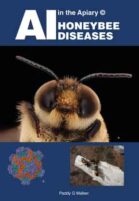
click image to zoom
This book is a comprehensive view of the breadth of different honeybee diseases. Each disease is covered by: • Classification • Biology • Transmission • Symptoms • How to identify the disease • Impact on the colony • Advice on mitigation In its own right this has required a significant amount of research. AI has helped to detail the content…
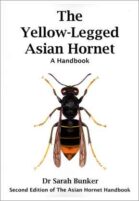
click image to zoom
Yellow-legged Asian hornets cause three important problems for humans: they love eating bees, especially honey bees; if you get too close to a nest they can be very aggressive; and they are voracious predators of our native insects. There has been much research since I published the first edition in 2019. This updated and expanded version is divided into three…
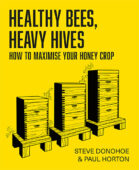
click image to zoom
Steve Donohoe
Paul Horton
Following on from Honey Farming by R.O.B. Manley (1946), and Honey By The Ton by Oliver Field (1983), Steve Donohoe and Paul Horton have produced a stunning book on beekeeping today, with a focus on increasing honey production. Clear diagrams and beautiful photographs complement a relaxed writing style which is both enjoyable and informative to read. Paul is a successful…
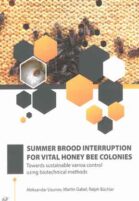
click image to zoom
Aleksander Uzunov
Martin Gabel
Ralph Büchler
The parasitic varroa mite remains the most serious problem for honey bee colonies worldwide. Despite various chemical treatments, many beekeepers still lose their colonies each year. This book sets out the authors' novel vision and practical steps on to how to manage bees for varroa control using a "nature based beekeeping" approach. With clear step-by-step charts on what to do…
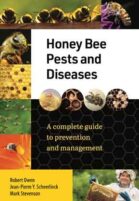
click image to zoom
Robert Owen
Jean-Pierre Y. Scheerlinck
Mark Stevenson
Written by three scientists with extensive beekeeping experience, and suitable for both hobby and professional beekeepers, this is the essential reference for diagnosing and managing honey bee diseases and maintaining honey bee health. Detailed chapters, illustrated with numerous photographs and diagrams, cover: • integrated pest management (1PM) • Varroa • viruses • brood diseases • adult diseases • mites and…

click image to zoom
In Pursuit of Liquid Gold tells tells the fascinating story of the earliest beginnings of beekeeping in South West England with special mention of monastries, weather protection and the beekeepers of the past. It also includes details of surviving bee boles with a very detailed list of them in Devon, Cornwall, Somerset and Dorset. There are 9 colour pictures and,…
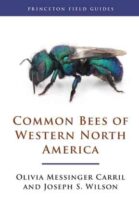
click image to zoom
Olivia Messenger Carril
Joseph S. Wilson
A PORTABLE, FULL-COLOR PHOTOGRAPHIC GUIDE TO THE MOST COMMONLY SEEN BEES IN THE WESTERN UNITED STATES AND CANADA. Bees play a vitally important role in the pollination of native plants and agricultural crops around the globe. These stunningly beautiful insects come in a wide range of sizes, shapes, and colors. There are more than 3,000 species in western North America,…
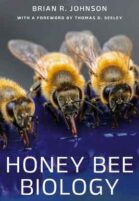
click image to zoom
"Honey Bee Biology will become the new definitive textbook for entomology courses, research scientists, science writers, and scientists interested in bees as a model system. Beekeeping teachers and keen students will buy this book as will the curious beekeeper just wanting to learn new things and be a better beekeeper." Ann Chilcott. Scottish Expert Beemaster and author (BBKA News Incorporating The…
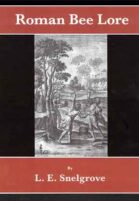
click image to zoom
REVIEW by Michael Freedman FCA, FPFS " Snelgrove was a school master and bee inspector for Somerset, he gained a MSc for research into bee diseases in 1920 and a MA in 1922 for Beekeeping in Roman Times, and was a life member of the BBKA and a past president. As a classicist, it enabled him to read the ancient…
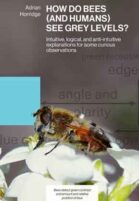
click image to zoom
Since the nineteenth century there have been many descriptions of bees' ability to discriminate coloured papers, but it is less well known that they can be trained to come to a grey target showing no colour. From their recognition of grey, and ability to discriminate light grey from dark grey, and from white and black, von Frisch concluded that bees…
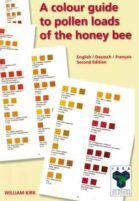
click image to zoom
Includes an explanation of the colour charts in English / Deutsch / Française This pollen book is a unique resource with worldwide demand. Beekeepers everywhere are fascinated by the sources of pollen brought back to the hive by their bees. Being able to identify the plants producing this pollen is the key to unlocking important information about bee forage in…
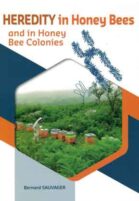
click image to zoom
A drone dies after mating. Nonetheless, his sperm will later transmit 100% of his genes to each of his daughters. A queen, on the other hand, because her egg is produced by cell division, will only transmit 50% of her genes to each of her offspring. To add to the complexity of honey bee genetics, a queen will mate with…
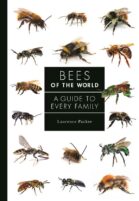
click image to zoom
A beautifully illustrated introduction to the incredible variety of bees from around the world (Hardback). When many people think of bees, they are likely to picture the western domesticated honey bee, insects that live in large, socially complex societies inside a hive with a single queen and thousands of workers. But this familiar bee is just one of more than…
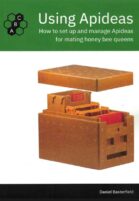
click image to zoom
Queen raising is one of the most rewarding aspects of beekeeping, allowing beekeepers to propagate the desirable characteristics of their best colonies throughout their apiaries. Father and son commercial beekeepers Ken and Dan Basterfield, both holders of the National Diploma in Beekeeping, have been using Apideas to raise their own queens for forty years. Here they present the tips and…
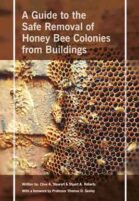
click image to zoom
Clive A. Stewart
Stuart A. Roberts
The general public are becoming more aware of the plight of ‘bees’. This is, more accurately, the plight of pollinating insects. Dave Goulson, in his book, (see Silent Earth: Averting the Insect Apocalypse) has called it the ‘Insect Apocalypse’ and this has meant that many people now believe honey bees to be a protected species. The term ‘bees’ in this…
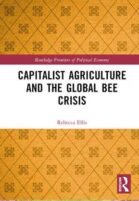
click image to zoom
Capitalist agriculture relies heavily on the pollination work of bees, but this system harms bees in innumerable ways. Indeed, human agriculture is one of the main culprits for the declining populations of wild bees and the declining health of honeybees. This book presents a political ecology of pollination that critically examines how managed honey bees and wild bees are harmed…
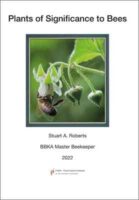
click image to zoom
This book was written as reference material to aid in the study of the National Diploma in Beekeeping (NDB). This is why the backbone of the book is the NDB plant list. However, for the NDB there is an expectation that the candidate will demonstrate knowledge beyond that of the plant list. So there are additional plant families and individual…
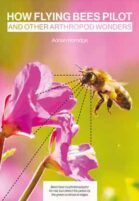
click image to zoom
In the visual system of the honeybee, feature detectors for the amount of blue and distribution of green vertical edges were slowly revealed over the past century, as outlined in a companion booklet (Horridge, 2021). The method was to train bees on one of many targets and then test the trained bees until they failed when the last remaining cue…
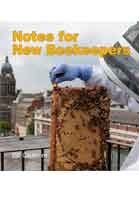
click image to zoom
Bill Cadmore was born and raised in a tiny village on the Norfolk/Suffolk border. He moved to London for university studies and then on to post-graduate work at the University of Leeds. As a teacher of Biology and Physics he went onto become a senior leader in a large comprehensive school in Leeds. Working with other schools, colleges and workplaces…
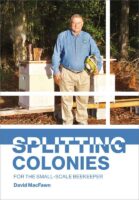
click image to zoom
Splitting Colonies is an important means of colony increase and swarming mitigation. Splitting is an art as much as a science. It should be noted splitting timing will vary year to year based on the local weather and conditions. This book contains information on when to split based on when the nectar flow starts in your area. Several splitting methods…
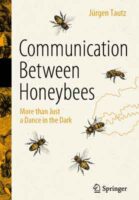
click image to zoom
How Do Bees Find Flowers? During the history of bee research, scientists have peered deep into the inner life of bee colonies and learned much about the behaviour of these insects. Above all, the bee waggle dance has become a famous and extensively discussed phenomenon. Nevertheless, recent insights reveal that while bees are social insects inside the hive they also…
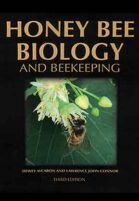
click image to zoom
Dewey Caron
Lawrence J. Connor
Since its release in 1999, Honey Bee Biology & Beekeeping has become a widely accepted textbook of apiculture. Universities use it to teach college students beekeeping and beekeepers use it to teach other beekeepers. It concentrates on the ‘why’, ‘how’ and ‘when’ of beekeeping. It explains bee and beekeeping basics in a manner meaningful to people who lack an intensive…
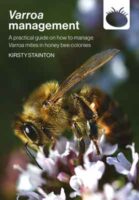
click image to zoom
This resource will provide you with everything you need to know for practical management of Varroa mites, it is the essential user-guide to Varroa treatments. In this guide you will learn: » Why Varroa mites are such a serious pest of honey bees. » How to spot signs that a honey bee colony is carrying a high mite burden. »…
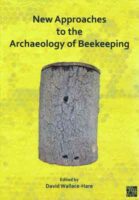
click image to zoom
New Approaches to the Archaeology of Beekeeping aims to take a holistic view of beekeeping archaeology (including honey, wax, and associated products, hive construction, and participants in this trade) in one large interconnected geographic region, the Mediterranean, central Europe, and the Atlantic Façade. Current interest in beekeeping is growing because of the precipitous decline of bees worldwide and the disastrous…
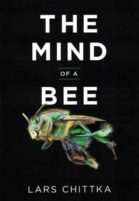
click image to zoom
Most of us are aware of the hive mind-the power of bees as an amazing collective. But do we know how uniquely intelligent bees are as individuals? In The Mind of a Bee, Lars Chittka draws from decades of research, including his own pioneering work, to argue that bees have remarkable cognitive abilities. He shows that they are profoundly smart,…
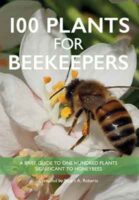
click image to zoom
Stuart Roberts is a Master Beekeeper, a member of the BBKA Examinations Board and a Trustee of the International Bee Research Association. The volume is a brief guide to one hundred plants significant to honeybees. Photographs are taken by the author during his work with apiaries in the Midland Counties. Each plant is described under the headings: Plant family; Common…
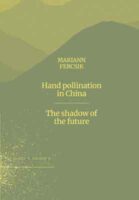
click image to zoom
Not the normal beekeeping volume, tells little about bees BUT highlights the dangers of losing them. This high quality photographic volume by an ethnographic researcher tells a visual story of the possible dangers facing us all on this planet. Will be of interest, not only to beekeepers, but all with concerns on pesticide usage and global warming. "Hand pollination in…
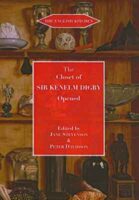
click image to zoom
Peter Davidson
Jane Stevenson
An early book listed in British Bee Bibliography. One of the great works of seventeenth-century culinary literature. Sir Kenelm Digby (1603-1665), was a soldier, sailor, pirate and diplomat; man of letters, bibliophile and collector; alchemist, scientist, philosopher, medical theorist and mathematician; a man of sensibility, a great lover, and a cook. Here was a true Renaissance man, one who John…
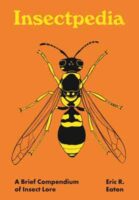
click image to zoom
Insectpedia introduces you to the wonders of the insect world while inviting you to make discoveries of your own. Featuring dozens of entries on topics ranging from murder hornets and the “insect apocalypse” to pioneering entomologists such as Margaret James Strickland Collins and Douglas Tallamy, this beautifully illustrasted, pocket-friendly encylopedia dispels many common myths about insects while offering new perspectives…
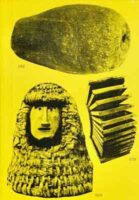
click image to zoom
An artistic project showing how man has housed bees over the centuries. The patenting and success of the modern hive in 1852 largely eliminated diversity in beehive design and its previous techniques have been overlooked. Using an array of archive images, this book uncovers that forgotten history in hive innovation and creates a common ground for future beehive research.
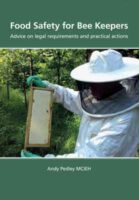
click image to zoom
In this book, Andy (an Environmental Health Officer for 46 years and a beekeeper for 30) explores the Consumer Protection law that applies to beekeepers and bee farmers. The book principally deals with Food and Food Safety, and includes a full HACCP that covers both extracted and comb honey. The book includes other products - Candles, Melts, Wraps and Polishes.…
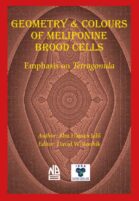
click image to zoom
Abu Hassan Jalil
David W. Roubik
This literature is for enthusiasts who have difficulty remembering scientific names but can recognize geometric shapes. A preliminary look at what is termed as the most difficult genus in the Indo-Malaya stingless bee group to identify and differentiate between species by morphology. This book will take the readers on a journey to explore the various aspects of Tetragonula brood structure…
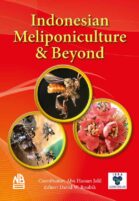
click image to zoom
Abu Hassan Jalil
David W. Roubik
Synopsis: The 3rd instalment in a series of literature on ASEAN Meliponiculture and Beyond, this portion entails the varied and diverse Stingless Bee Fauna in the Indonesian archipelago. We attempt to bridge the different beekeeping and culture methods in hiving, colony acquisition or multiplication, forage provisioning, nest building material sources and regulating extreme weather or local conditions. To address conservation…
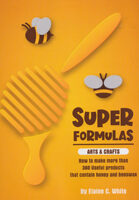
click image to zoom
How to make more than 360 useful products that contain honey and beeswax. Step-by-step directions for making and using each product. Mail order sources listed for all ingredients. Includes patterns for "Honey Bear" and "Worker Bee" stuffed tools. Elaine White is a house-wife and beekeeper who lives in central Mississippi with husband, Wil, and son, John. Her passion for formulas…
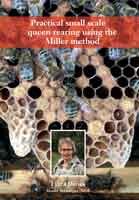
click image to zoom
Rearing new queens for our colonies is a rewarding and important practice that often gets mis-labelled as too difficult and complicated. This, is simply, not correct and with some planning and attention to detail new queens can be produced at a fraction of the cost that you will pay for them elsewhere. Queen rearing is an organised process where thought…
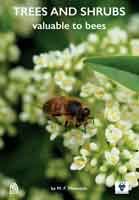
click image to zoom
This list of tables is a sequel to the Association's leaflet "Save our Pollinating Insects"- We have received many enquiries as to how those with opportunities to plant trees and shrubs on public or private land can implement the plea contained in the leaflet to conserve our economically useful pollinators. The books and articles available have proved curiously in-adequate-in assessing…
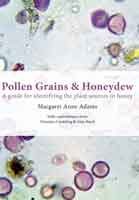
click image to zoom
This book describes, in detail, a simple approach for beekeepers, to identify the plant sources of their own honey. They will occasionally find they have a special honey, and then the jars can be labelled accordingly. From 2019 to 2021, beekeepers from The UK and Continental Europe sent me samples of their honey, and the collection of digital photos from…
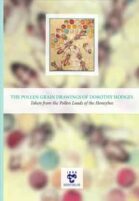
click image to zoom
The Pollen Loads of the Honeybee by Dorothy Hodges, an artist and experienced beekeeper, was first published 1952. It included drawings of pollen grains which will never be surpassed. The originals are preserved at the Royal Botanic Gardens, Kew. This booklet reproduces these drawings.
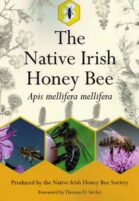
click image to zoom
A collaborative work with contribution from expert beekeepers and scientists throughout Ireland. It contains everything you need to know about the Native Irish Honey Bee - from evolution to genetics and into the future with conservation, and 'how to' sections from commercial beekeepers. Includes a practical section with step by step instructions on queen rearing and bee-breeding techniques. Most beekeeping…
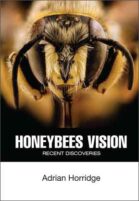
click image to zoom
Professor Adrian Horridge has thoroughly enjoyed a long and productive career in scientific research. At 17 he won a scholarship to St John's College Cambridge, where he spent 10 years, from student to a fellowship, ending in the Zoology Department working with new techniques of recording from nerve cells. Some of this time was spent at the Naples Marine Laboratory…
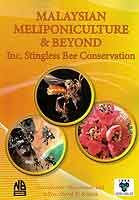
click image to zoom
Abu Hassan Jalil
David W. Roubik
This is the second instalment of the "Meliponiculture and Beyond" Series. It covers the meliponiculure activities and the spectral produce from stingless beekeepers and conservationists efforts in Peninsular Malaysia and East Malaysia on Borneo Island. Scrutinizing the regional stingless bee fauna and floral diversity with crop pollination potentials. The prospects of highland Stingless Beekeeping is examined with the establishment of…
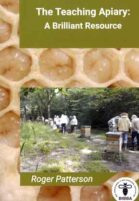
click image to zoom
This book provides help and information for all beekeepers. For BKA officials, demonstrators and apiary managers there is guidance to set up a facility if none exists, with suggestions for improving apiaries already in existence. The ordinary beekeeper who is keen to learn has an indication of what they should seek to gain from their local teaching apiary. There is…
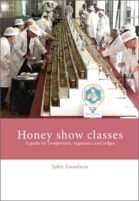
click image to zoom
This book has been written as a guide for everyone involved with honey shows, be it organising, exhibiting or judging. If on the day of the show the book has helped to achieve successful organisation, high standards of exhibiting, well-written and unambiguous honey show schedules, increased interest in honey shows, and more applicants for the BBKA Show Judge certificate, the…
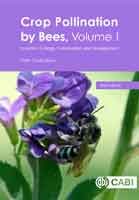
click image to zoom
Since the second half of the 20th Century, our agricultural bee pollinators have faced mounting threats from ecological disturbance and pan-global movement of pathogens and parasites. At the same time, the area of pollinator-dependent crops is increasing globally with no end in sight. Never before has so much been asked of our finite pool of bee pollinators. This book not…
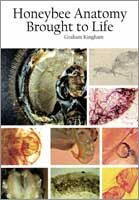
click image to zoom
This book uses photo essays to set out and display the anatomy, internal, external of the honeybee with over 350 detailed micrographs, together with slide images and drawings. Pests and other additional hive activities are also included. It will appeal to anyone interested in this fascinating insect and be particularly valuable to beekeepers studying for their British Beekeepers Association Module…
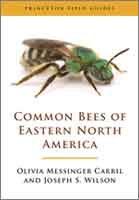
click image to zoom
Olivia Messenger Carril
Joseph S. Wilson
The only portable full-color photographic guide to the most commonly seen bees east of the Mississippi River. "An excellent resource for anyone interested in learning about bees in eastern North America. There really isn't any other book like this." Sheila R. Colla, coauthor of Bumble Bees of North America Bees play a vitally important role in the pollination of native plants…




















































